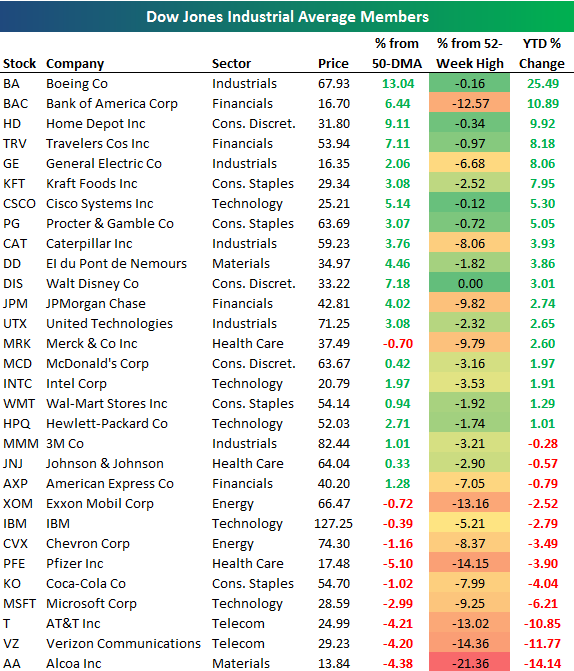

Limitations of Dow Jones Industrial average calculations This spinoff caused the Dow Jones Industrial Average divisor to fall from about 0.1518 to its current amount of about 0.1517. For every five shares of IBM owned, stockholders were issued one share of KD. 4, 2021 when IBM completed a spinoff.Įssentially, IBM parted ways with Kyndryl – which is now an independent business trading under KD – which manages information technology infrastructure. The current divisor on the Dow Jones Industrial Average is 0.1517. Current Dow Jones Industrial average divisor This shows that the index rose +13, whereas if you had incorrectly kept the old divisor it would have looked like the index sank simply because you removed B from the equation. To find the new index value, your equation would look like this: So let’s say the next day A rose to $58, while G rose to $30. You would use this number moving forward. You would then divide the price summation by the last reliable index value, which in this case is 70.

To find your new divisor, you would need to first calculate the new price summation, or the value of A + G: You would need to remove B from your index.

was bought and absorbed by another company, and as a result B is no longer on the market. This way, you can see that while the value of each share has changed, the overall index value has not. Then, you’d plug the new divisor in as the denominator in your original equation: Then, you’d divide the new price summation by the last reliable index value, which was 70. First, you’d calculate the new price summation: To accommodate for the stock split, you’d recalculate the divisor, otherwise your calculation will show a massive loss in index value where there was none. hasn’t changed – it just has a larger number of total shares. This decreases the value of each B share to $22.īut the valuation for Beta, Inc. executives decide on a 4-for-1 stock split. Let’s say we’re looking at a situation where A, B and G are all still in the equation. You would use the same divisor moving forward until there was a need to modify it. You’d then plug the divisor in as the denominator in your original equation: Then, you would take 162 and divide it by the last reliable index value, which was 70. To calculate your divisor in cases of index expansions, you first need to find the new price summation, which is simply the combined value of all stocks in the index: So instead of using the number of stocks as the denominator in your equation, you have to come up with a new divisor. This makes it look like the entire index experienced a fall of -16, when really all that happened was one company was added. (G) to our example index with a value of $22 per share, simply adding the stock to the index would make the formula look like this: It skews the overall index value too much. You can’t just use the total number of stocks as your divisor anymore. Divisors for index expansionsĪdding new stocks to the index gets tricky. On the news you might hear that “The Dow is up by 500,” or “The Dow was down by 50 today.” That’s where these numbers come from – they’re a measurement of real-dollar changes in the index’s value over a given period of time. The difference between today’s value – 70 – and yesterday’s value – 69 – is one. The new index value calculation would be: Let’s say the price of A went up by $4 to $52 the next day. The next step to understanding Dow Jones Industrial Average calculations is understanding net sum price changes. CNN Sans ™ & © 2016 Cable News Network.So our index value would be 69.

Market holidays and trading hours provided by Copp Clark Limited. All content of the Dow Jones branded indices Copyright S&P Dow Jones Indices LLC and/or its affiliates. Standard & Poor’s and S&P are registered trademarks of Standard & Poor’s Financial Services LLC and Dow Jones is a registered trademark of Dow Jones Trademark Holdings LLC. Dow Jones: The Dow Jones branded indices are proprietary to and are calculated, distributed and marketed by DJI Opco, a subsidiary of S&P Dow Jones Indices LLC and have been licensed for use to S&P Opco, LLC and CNN. Chicago Mercantile: Certain market data is the property of Chicago Mercantile Exchange Inc. US market indices are shown in real time, except for the S&P 500 which is refreshed every two minutes. Your CNN account Log in to your CNN account


 0 kommentar(er)
0 kommentar(er)
